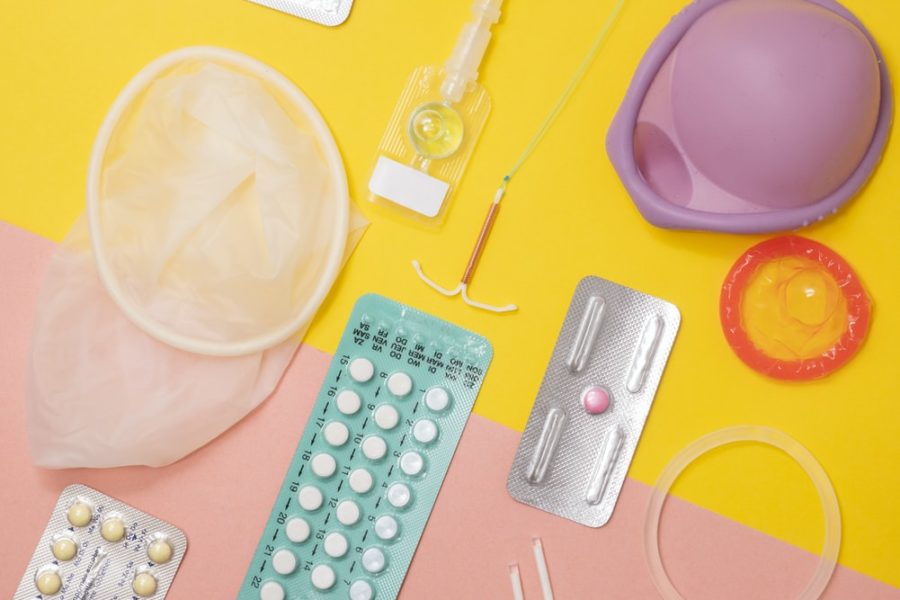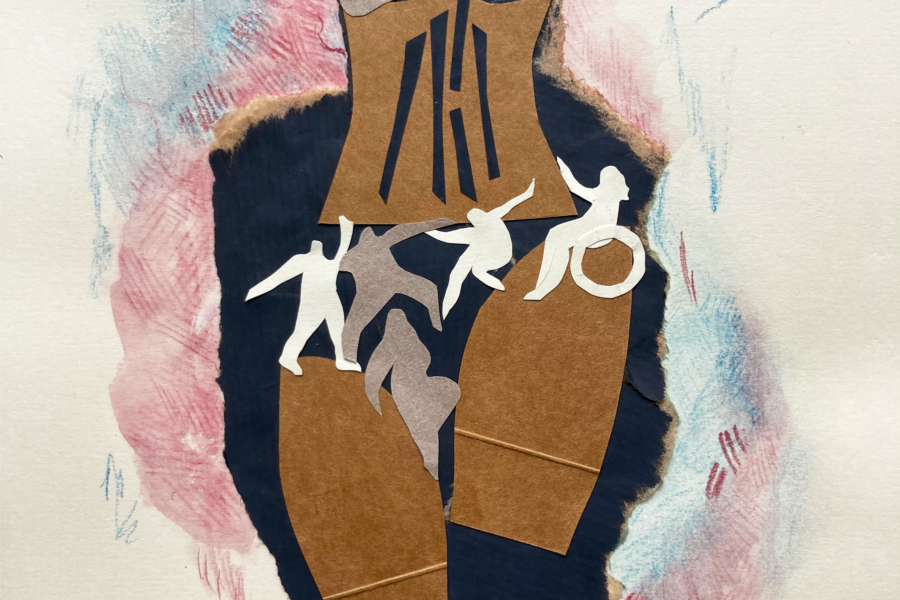Dildos have a long and controversial history, and have existed for much longer than many of us think. Despite this, they continue to be a taboo topic of conversation. However, dildos can also bring a lot of joy, freedom, and liberation to those who use them. To write this article, I collected responses from a variety of individuals with different gender and sexual identities, and different opinions on dildos. In doing this, I wanted to explore the contested opinions and complex emotions that many have about dildos…

Reclaiming the Dildo
Note: this article was written by our Sex and Relationships Editor, a cis queer woman, and thus will reflect the experiences of a cis queer woman and people with vaginas. However, anonymous responses were collected from a variety of individuals with different gender identities and sexualities, which will be referred to throughout this article.
Dildos have a long and controversial history, and have existed for much longer than many of us think. Despite this, they continue to be a taboo topic of conversation. However, dildos can also bring a lot of joy, freedom, and liberation to those who use them. To write this article, I collected responses from a variety of individuals with different gender and sexual identities, and different opinions on dildos. In doing this, I wanted to explore the contested opinions and complex emotions that many have about dildos.
One respondent said, “I used to not be a big fan because…I was trying to divert away from performative heterosexual sex as we learned and consumed in the media to explore other aspects of my sexuality.” Another mentioned how they weren’t sure if they would enjoy using dildos, but once they “removed expectations and the idea that a dildo represents a penis it became so much fun.” If you take anything away from reading this article, let it be this – challenging our ideas of dildos as representations of penises opens up so many possibilities.
Firstly, it allows us to challenge the power dynamics that come with the act of penetration. Historically, cis women were not allowed to penetrate men, because penetration was perceived as a masculine act – and this is still the case. However, once we decouple the dildo from the penis, the act of penetration is genderless, and thus who can penetrate is less prescriptive. Changing our assumptions of dildos as masculine would account for the fact that not everyone who has a penis is a man and identifies as masculine. Dildos can also demystify the penis as a source of male dominance and remove its power, which has the potential to subvert the power dynamics of heterosexuality.
While it is important to question the power dynamics associated with penetration, dildos can allow us to further explore different power dynamics and role play within partnered sex. Using dildos can open up new possibilities for people in terms of sexuality: “I often thought of myself as very sexually submissive and would also be perceived as such because of my apparent femininity, and so I would always become the one to get ‘topped’ in a sexual relationship. Once I started circulating in more genderqueer dating circles, where pre-assumptions about gender were minimized…that allowed me to take on different roles in sex regardless of my femininity.” One respondent said, “Using a dildo makes me feel more in control as opposed to having sex with a cis man, as it is just an object that doesn’t come inherently with certain dynamics. If it is being used on me by someone, it makes me feel powerless but in a good way. If I am using it on someone, it makes me feel free because it’s a moment that becomes ahistorical in terms of gender parameters.” Once the dildo becomes an object that can facilitate new sex acts it can be used to “explore different parts of [one’s] sexuality and gender identity, and [create] new dynamics with [their] partner.”
Despite this, the dildo is still very much gendered within the sex toy industry, seen in how sex toys are organised as ‘toys for her’ and ‘toys for him’. These are often marketed along heteronormative lines and also ignore the existence of non-binary and gender non-conforming people. The industry also assumes that all women have a vulva/vagina and all men have a penis. Moreover, sex toys for couples assume that the couple is heterosexual and cisgender, and that they will partake in p-in-v penetrative sex. But contrary to popular belief, most sex toys can be used for both partnered and solo sex, can be used on many body parts, and by any genders and sexualities.
Gendered assumptions also affect the colour and style of sex toys. Dildos marketed to cis women rather than cis gay men tend to look non-realistic and super colourful. While a variety of colours are used, some have noted that purple is one of the most popular sex toy colours, as it is gender-neutral and does not necessarily suggest sex in the same way that red or black do. Sex and relationships journalist and editor Paisley Gilmour suggested that the lack of flesh-coloured didoes may be a result of obscenity laws which meant that sex toys couldn’t look like penises. It could also be because realistic dildos are seen as much more threatening to cis men.
However, nowadays this change in the market may reflect the changing sex toy market, with many lesbian and straight cis women preferring non-realistic dildos that are not flesh-coloured. As one respondent said, “I love how they come in bright colours – getting my dildo I chose a neon pink one of course, and to me it was a statement that this is not a cis dick and it’s just a fun object I can use for queer sex.” Historically, dildos that were realistic or had balls were especially controversial, with many lesbians in the 1980s choosing to chop off the balls before less realistic, ball-free dildos became more readily available. Although it has become less of an issue, it seems that this persists: “As two women who don’t want anything that looks too realistic, we have sometimes struggled to find dildos that accommodate for this.”
Thankfully, there are now plenty of companies such as Self and More, Shop Enby, and Normal that avoid using gendered terms and instead categorise toys based on function or body part to be more inclusive. Reclaiming the dildo as a genderless sex toy will reflect the diverse experiences of those who use them: lesbian women, gay men, heterosexual couples, non-binary and genderfluid individuals, disabled people. Most importantly, challenging our idea of dildos as masculine objects means challenging our classifications of the penis as masculine, accounting for the range of genders on the spectrum and trans people who might not associate specific genitals with masculinity.
We need to liberate the dildo from the negative and repressive connotations it can evoke, namely as purely representative of the penis. To do this, we must go beyond seeing it as an object that implies a male gender. Dissociating dildos from the penis would also allow us to think of dildos as a pleasure-giving device rather than an extension of masculinity. This is especially important as cis lesbian women who get pleasure from dildos are often thought of as ‘heterosexuals in denial’. It would allow us to see lesbianism as something other than an emulation of heterosexuality, without denying the possibility that lesbians and bisexuals can enjoy penetration.
The dildo is evidence of the ability to disrupt the confines of gender, a subversive rather than conforming act. The dildo has always unsettled categories of gender and sexuality because it suggests sexual pleasure can be disconnected from sexual identity and gender – and even from our partners: “It’s interesting to have a relationship with an inanimate object… It doesn’t replace sex with a partner, but instead gives me pleasure and time with myself, or enhances the experience with others.” Many said they did not consistently use a dildo until their current relationship because “having a partner encourages more creativity with sex and using a dildo is one way of exploring this”, and they “started using one with a partner…to have sex rather than masturbate, and also usually in combination with other practices/objects.” Others mentioned that “using a dildo between people is really fun because it just offers more variety and power play and mental stimulation.” So, it’s clear that there’s no one way of using a dildo; rather, it can add variety to our sexual practices.
Seán Talbot, a fourth-year BA Contemporary Performance Practice student at the Royal Conservatoire of Scotland, has just completed a six-month process using a dildo to create their degree show. This was a 40-minute theatrical physical comedy performance dealing with sexuality and dildos. For Seán, “dildos are such an interesting material, artistically, semiotically, sexually, materially.” Seán was “working through feelings of fun, pleasure, isolation, and loneliness with the dildo as [their] partner.” Seán said, “In the past six months, ‘using’ a dildo has meant a lot of things. Sometimes I would spend hours throwing it into the air, or hitting it off my body. But also I would continue to use it for pleasure.” Most of all, dildos can be “liberatory, in many ways. They are unabashedly sexual, in-your-face, and allow for experiencing penetration with or without a partner or partners. To me they also can represent a queerness, a playfulness with sexuality.”



When asked how using a dildo made them feel, respondents replied with “sexy, embodied and confident”, “satisfied in a different way but by no means more satisfied”, “powerful, confident and wanted”, and “fun and silly”. Instead of seeing it as a shameful object or associated with cis male genitals, we should see it as an amazing invention that allows us to explore gender and enjoy our sexuality.
Meli Vasiloudes Bayada (she/her), Sex and Relationships Editor
Photo credits: Scintillating Self-Discovery Smut Show by Seán Talbot, photographed by Julia Bower, edited by our wonderful Graphic Designer Lucia Villegas.




Leave a Comment